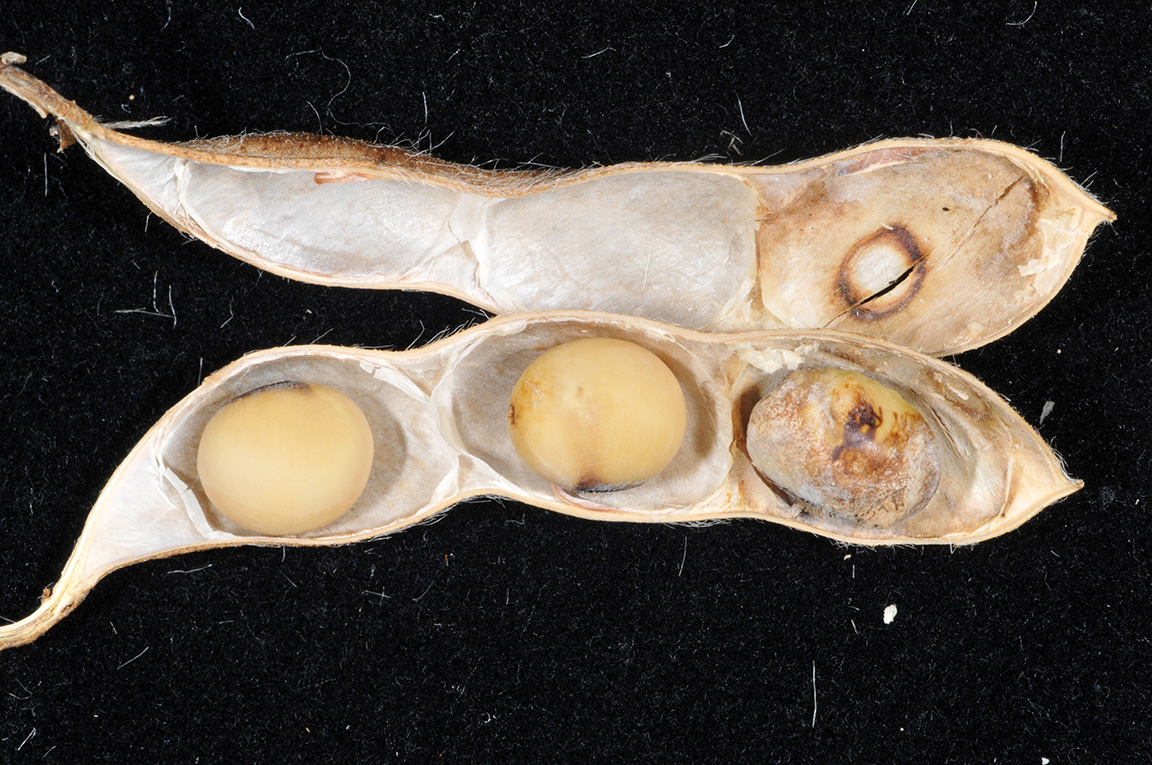Soybean fields throughout the state are rapidly undergoing their annual color changes, deep green to golden yellow. Those soybean fields still green, especially those that are behind neighboring fields in development, should be monitored for bean leaf beetle. Remember that earlier, or later planted crops in a region, can often be magnets for insect pests, depending on time of year. Bean leaf beetle will be attracted to these “trap crops” and begin to feed on the softer green pods as the foliage begins to yellow. Bean leaf beetles scar the surface of pods, but only occasionally feed through the pod to the developing beans. The problems come later, during pod maturation. At that time, this scar often cracks as it dries out, leaving an entry hole for moisture and airborne plant pathogens (primarily fungi and yeasts) that may cause discolored, moldy, or shriveled beans.
It is important for pest managers to be able to predict whether economic damage will occur based on the numbers of beetles that are present now and the stage of pod development (i.e., green, yellow, yellow-brown, or brown pods). Once the pods turn yellow to yellow-brown, they become unattractive and less susceptible to damage (this is also part of the reason behind the movement from drying beans to still-green fields). Control is normally not warranted when pods are yellow or brown, and you likely won’t contact many beetles with these sprays – they are not interested in you and your yellow pods.
For leaf feeding, 15% or greater defoliation in soybean growth stages R1-early R5 should be considered for treatment if beetles are still active. For reference, this is a pretty high level of defoliation for this time in the year, and quite uncommon historically. For growth stages R5-R6, scout bean fields for pod damage: randomly select 2 plants in each of 5 areas of the field and count the number of pods per plant and the number that show damage (i.e. 10 total plants). Calculate the percentage of damaged pods per plant for the field as a whole. Note whether the pods are green, beginning to turn yellow, or are yellow/brown. You should also determine the number of beetles per sweep using an insect sweep net. Take 5 sets of 20 sweeps in the field. Determine the number of bean leaf beetles per sweep.
Use the following table to determine when a treatment may be necessary.
| No. of beetles per sweep in 30 inch (7 inch) row spacing | |||
|---|---|---|---|
| Pot Injury Level | Less Than 4 (3) | 4(3) to 7(5) | More than 7(5) |
| 0 to 8% | Discontinue sampling | Sample again in 5 days | Control (preventive) if pods still green |
| 8 to 12% | Sample again in 5 days | Control if pods are still green | Control if pods are green to yellow |
| Over 12% | Control if pods are still green and beetles are present | Control unless pods are completely dry | Control unless pods are completely dry |
| Table modified from the University of Illinois. | |||
If a treatment is deemed justified, be mindful of the insecticide’s pre-harvest interval (PHI) which is stated on the label, this is the number of days before one can legally harvest those soybeans. It varies widely, with some recommended insecticides having a PHI of 45 days, which will likely be too long for some planned harvest windows.
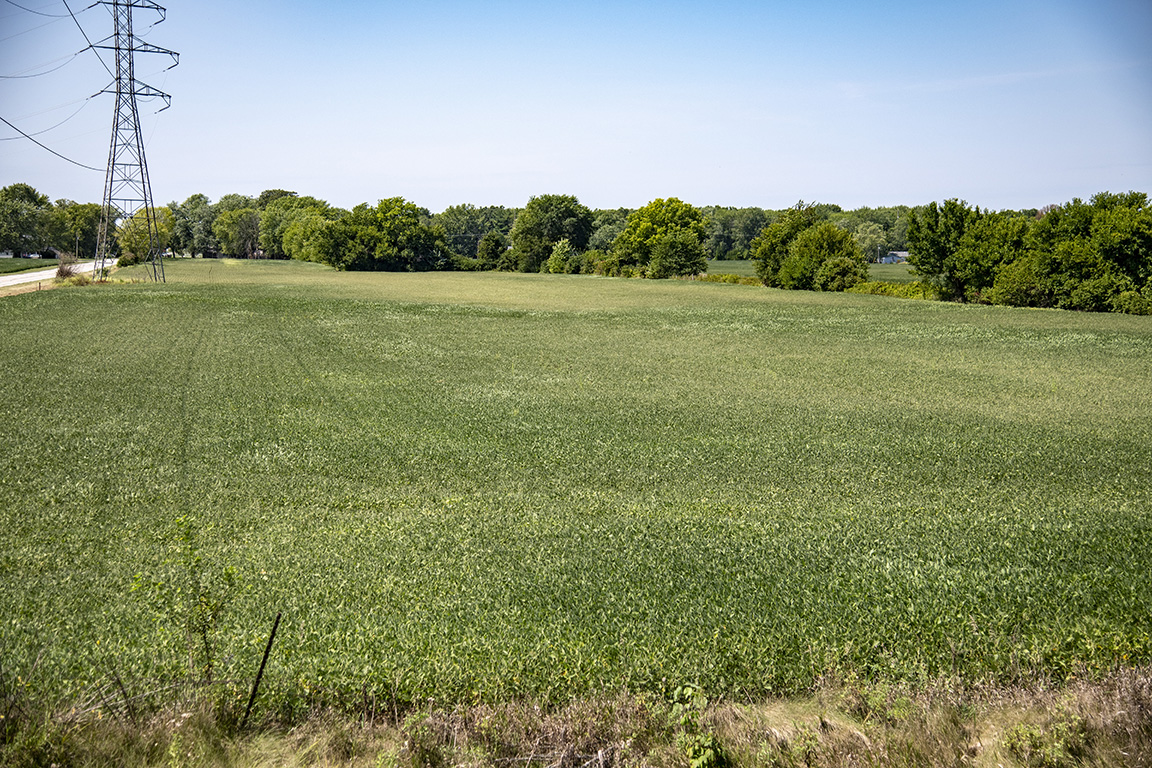
While driving by this soybean field, something just didn’t look right. Here is a view from an adjacent hill. (Photo Credit: John Obermeyer)
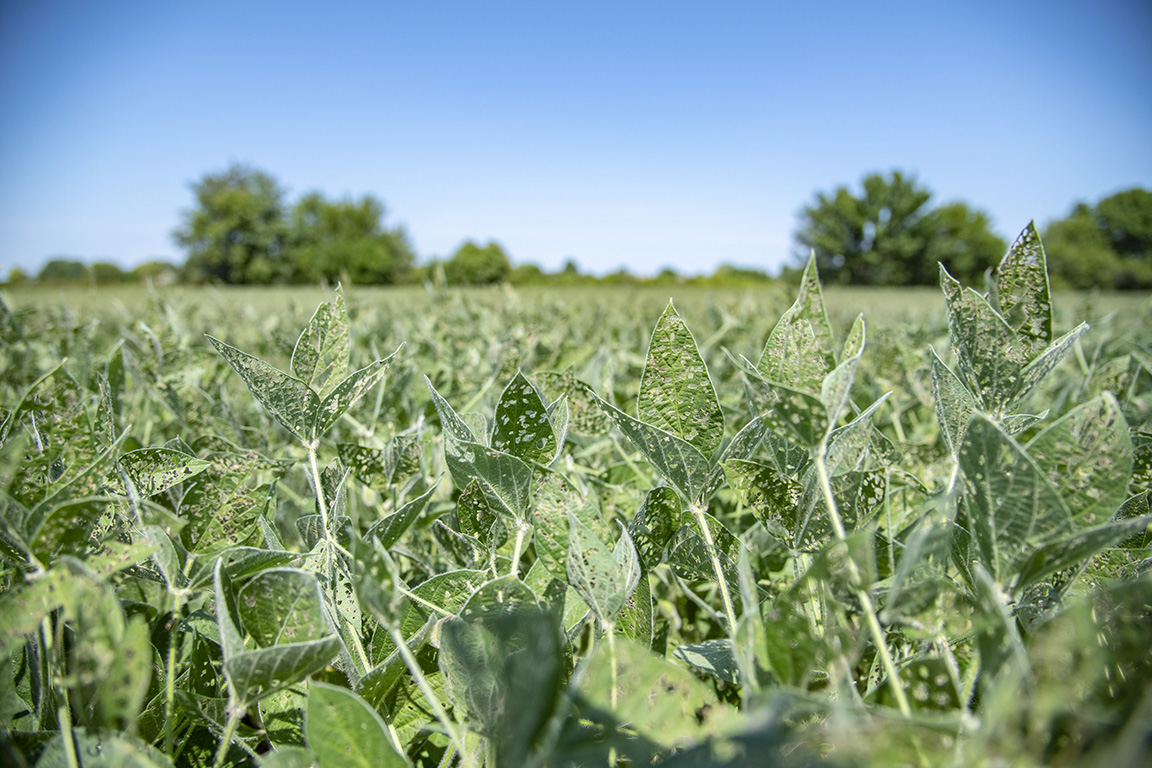
Just one step into this field showed all the little round holes…a.k.a., defoliation. (Photo Credit: John Obermeyer)
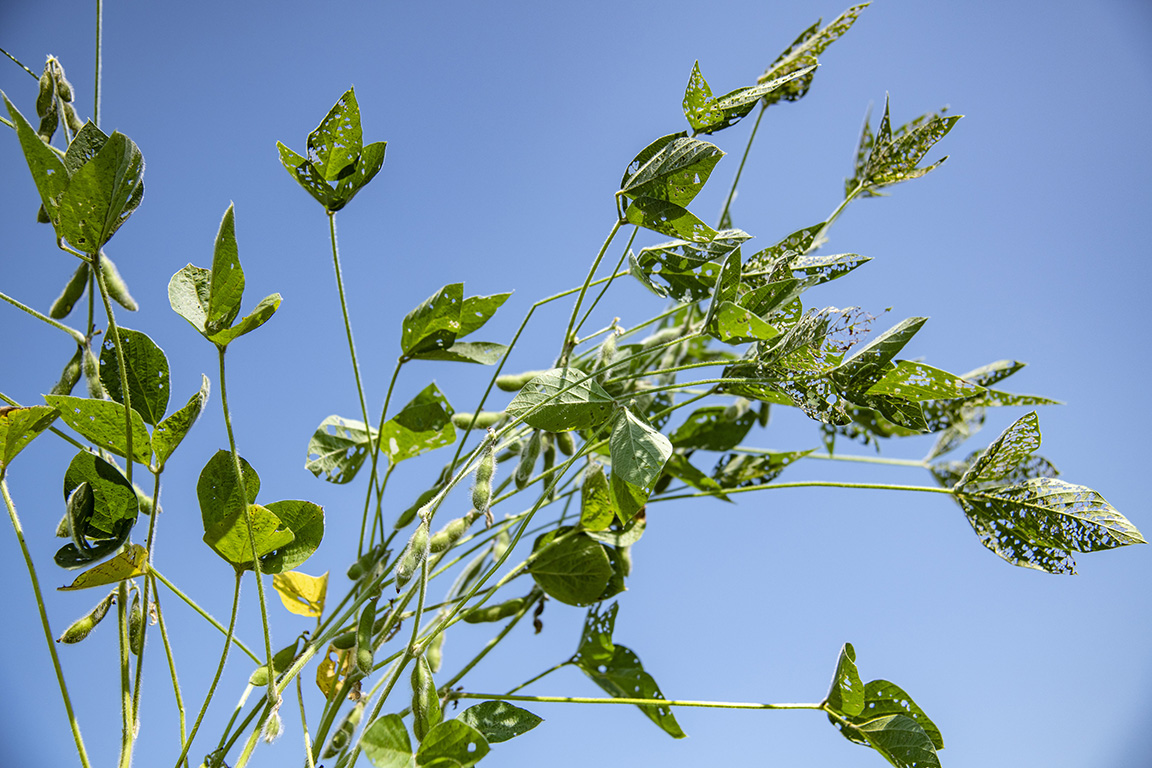
To assess the defoliation throughout the canopy, it is helpful to hold up plants for a full view. Two plants were measured for percent defoliation using a free app, LeafByte, but it takes some time to do. One plant measured 10.7% and the other 15.8% total defoliation. Rule of thumb, the damage always looks worse than what it really is. Notice how most damage is in the upper canopy. (Photo Credit: John Obermeyer)
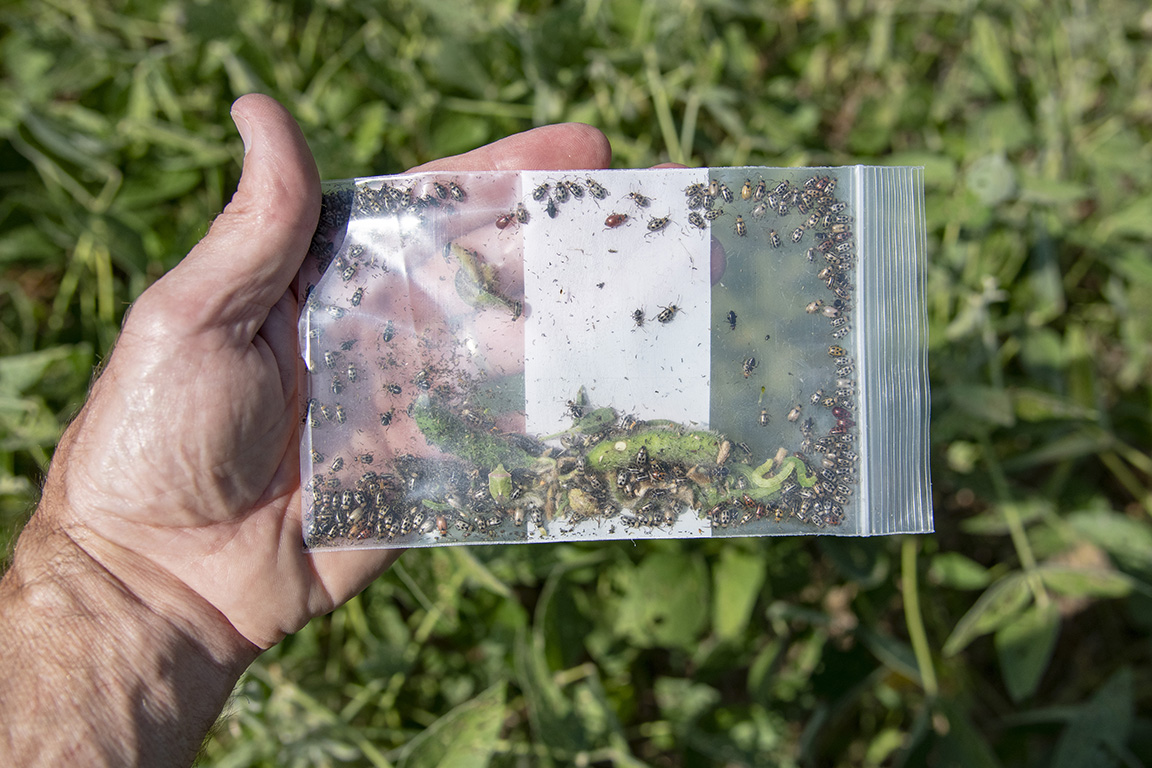
The next logical step is to identify the pest and numbers, will damage continue? The plastic bag contains the contents of 20 sweeps with a sweep net, 326 bean leaf beetles and a few green cloverworms. That is 16.3 beetles/sweep, compare with the threshold table! (Photo Credit: John Obermeyer)
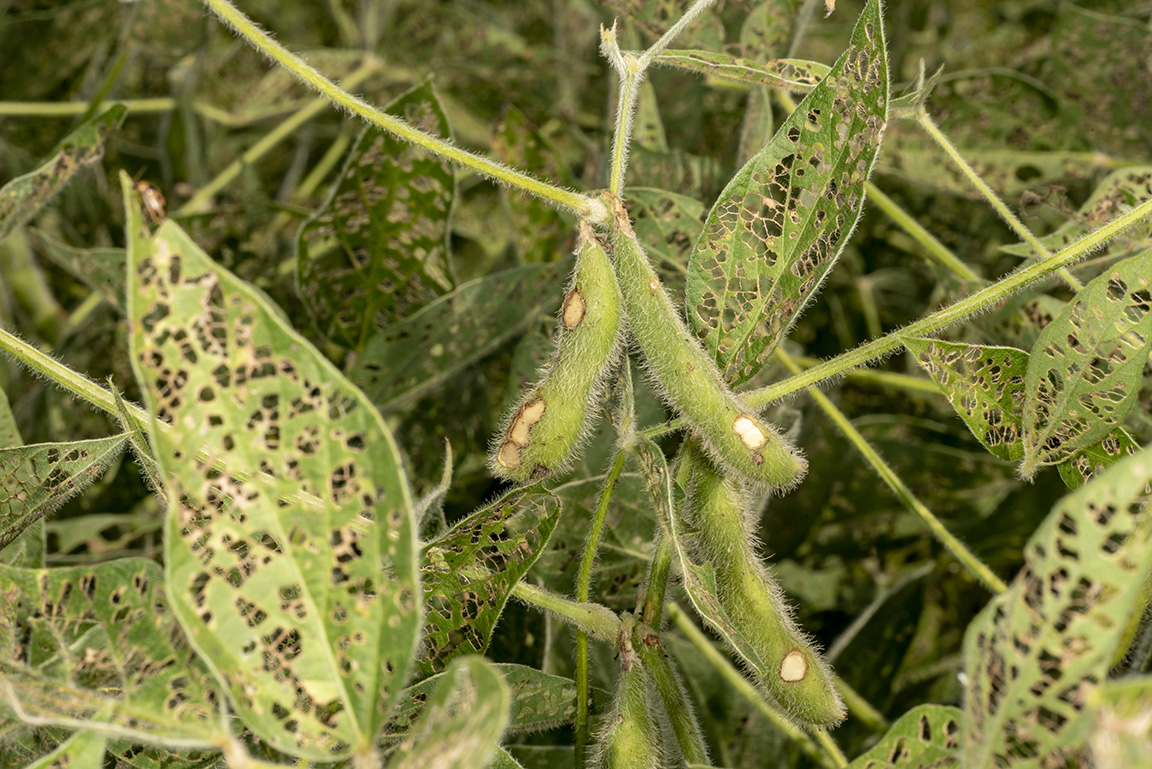
Incredible as it may seem, the defoliation percentages, in these late R5 soybeans, didn’t justify a rescue treatment alone…BUT there’s more to the story. As this photo reveals, the bean leaf beetles are beginning to feed on the pods (see accompanying article). Now we consider the bean leaf beetle biology (will feed until frost), the incredible numbers in this field, and their feeding switch from foliage to pods in the very near future. This soybean field needs protection!!! (Photo Credit: John Obermeyer)


